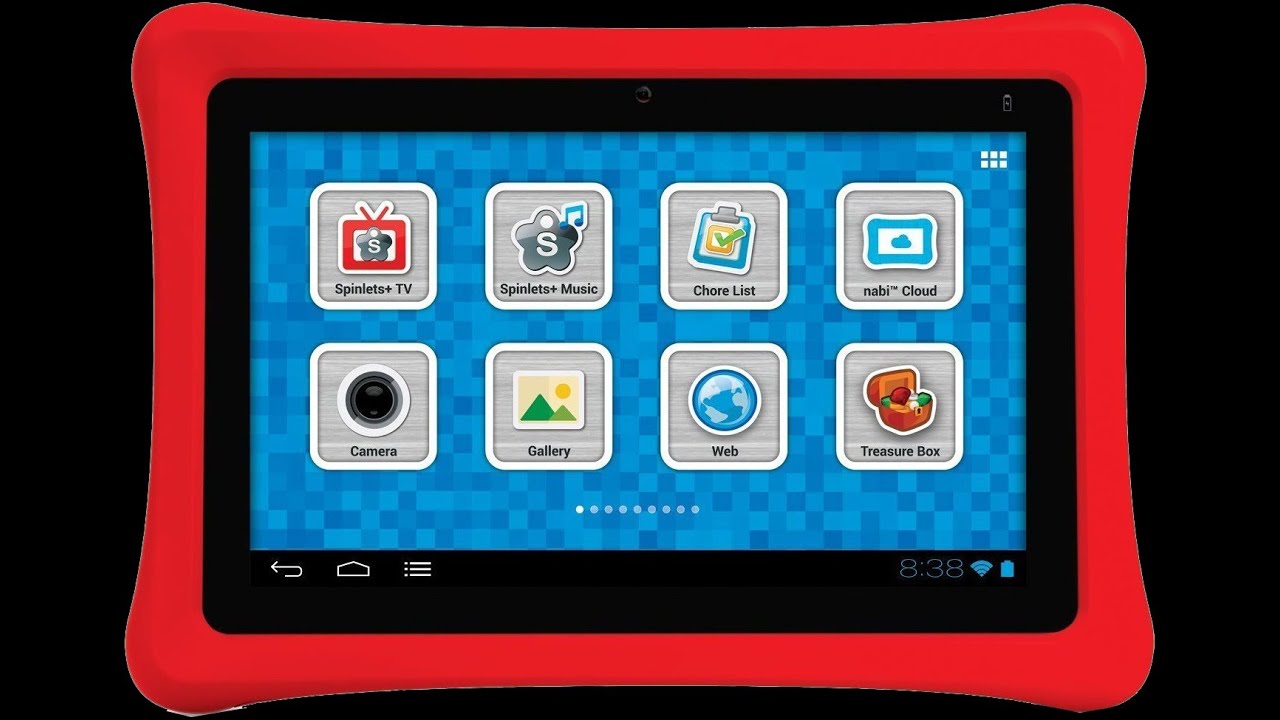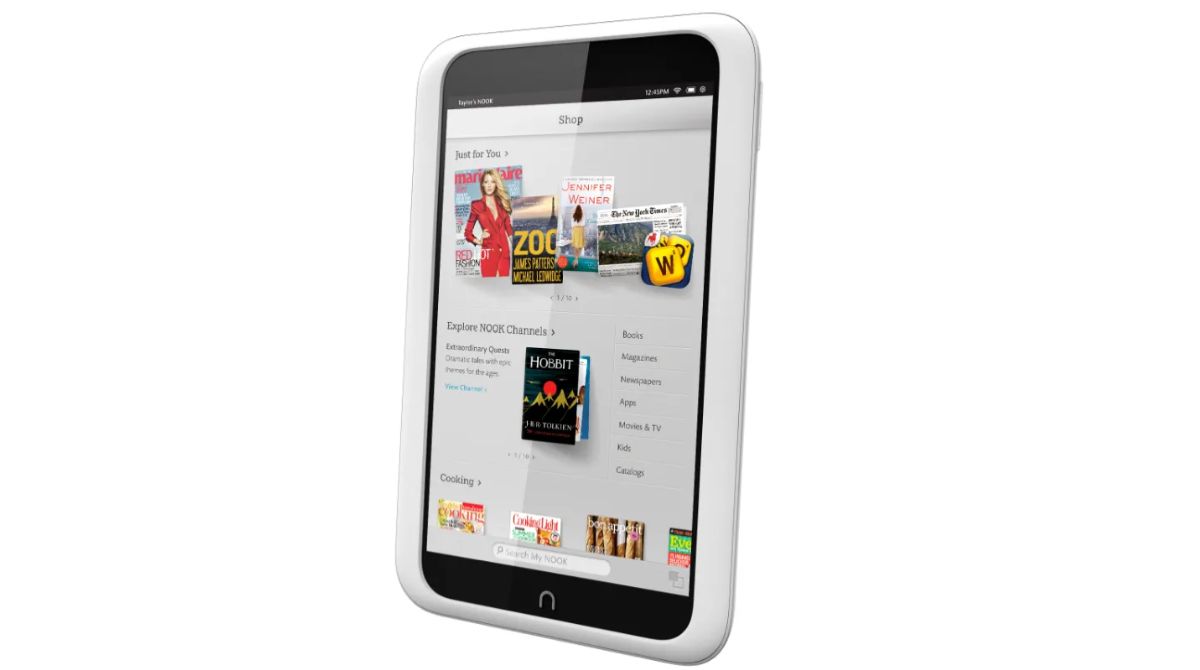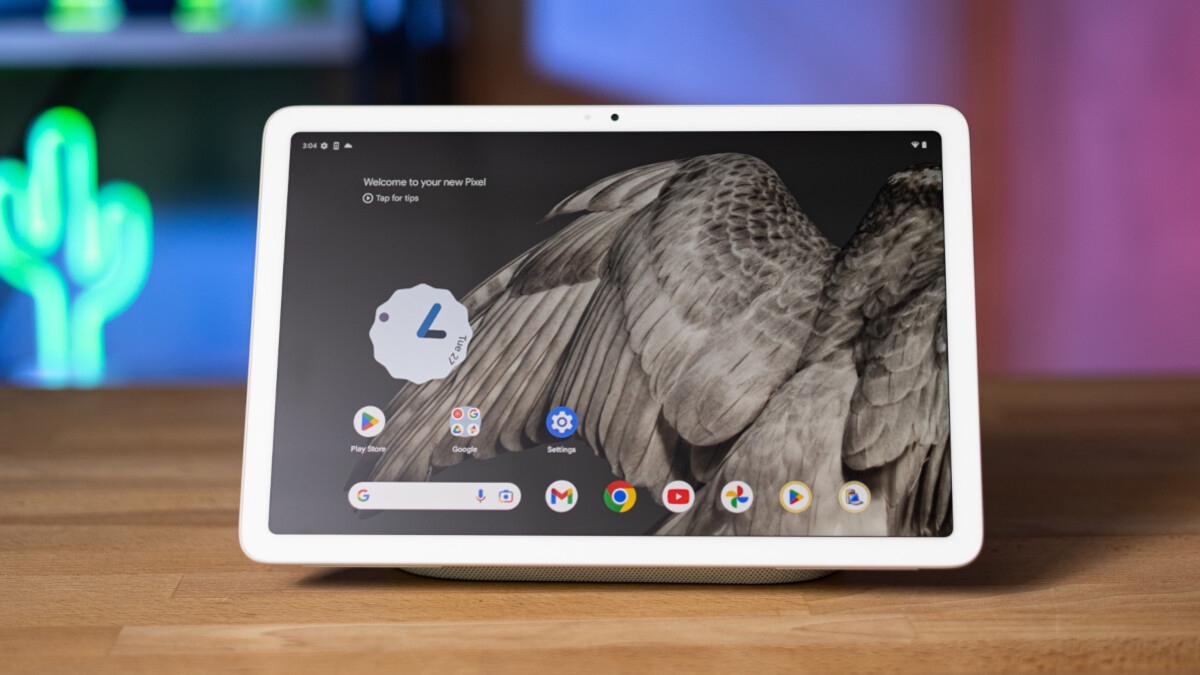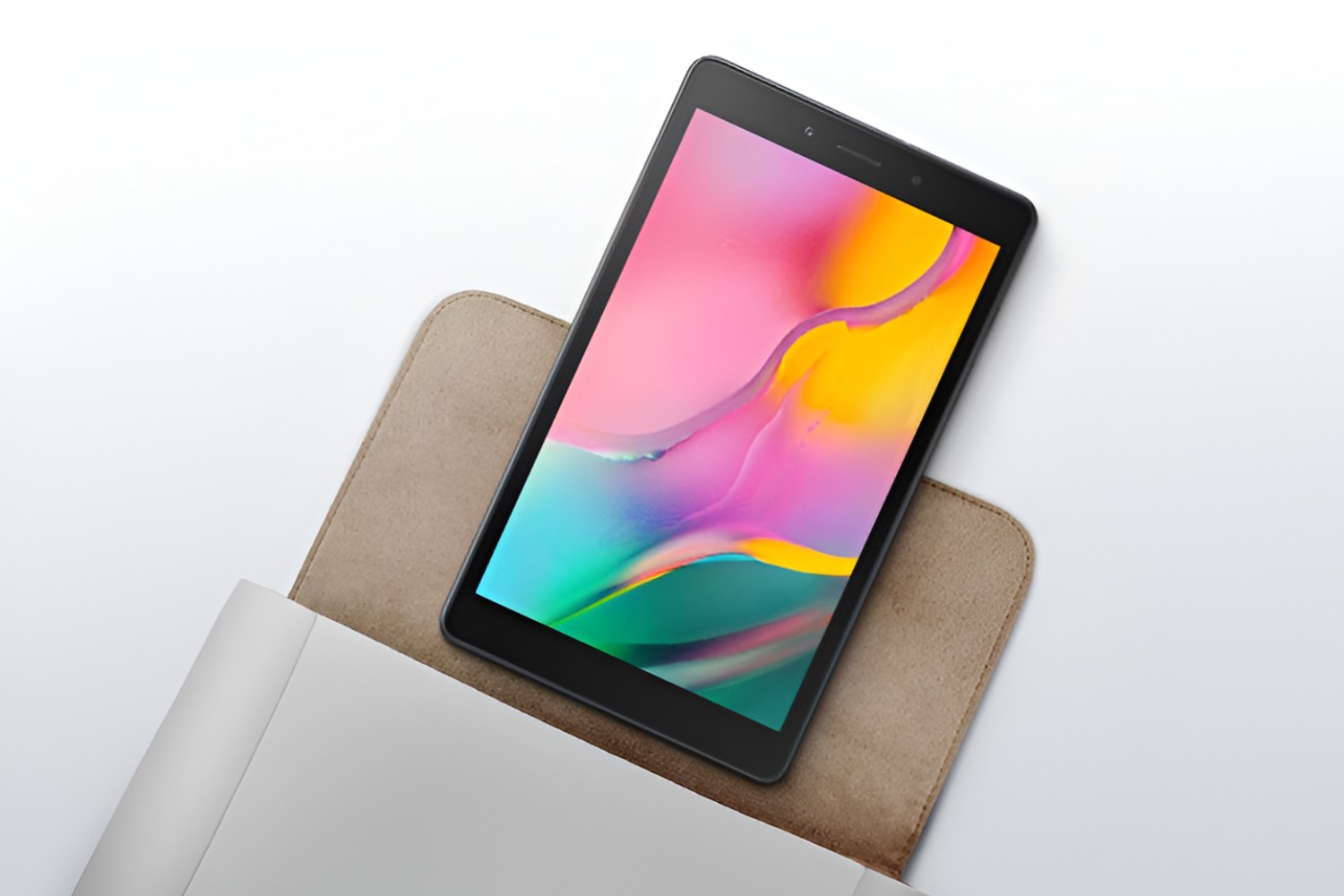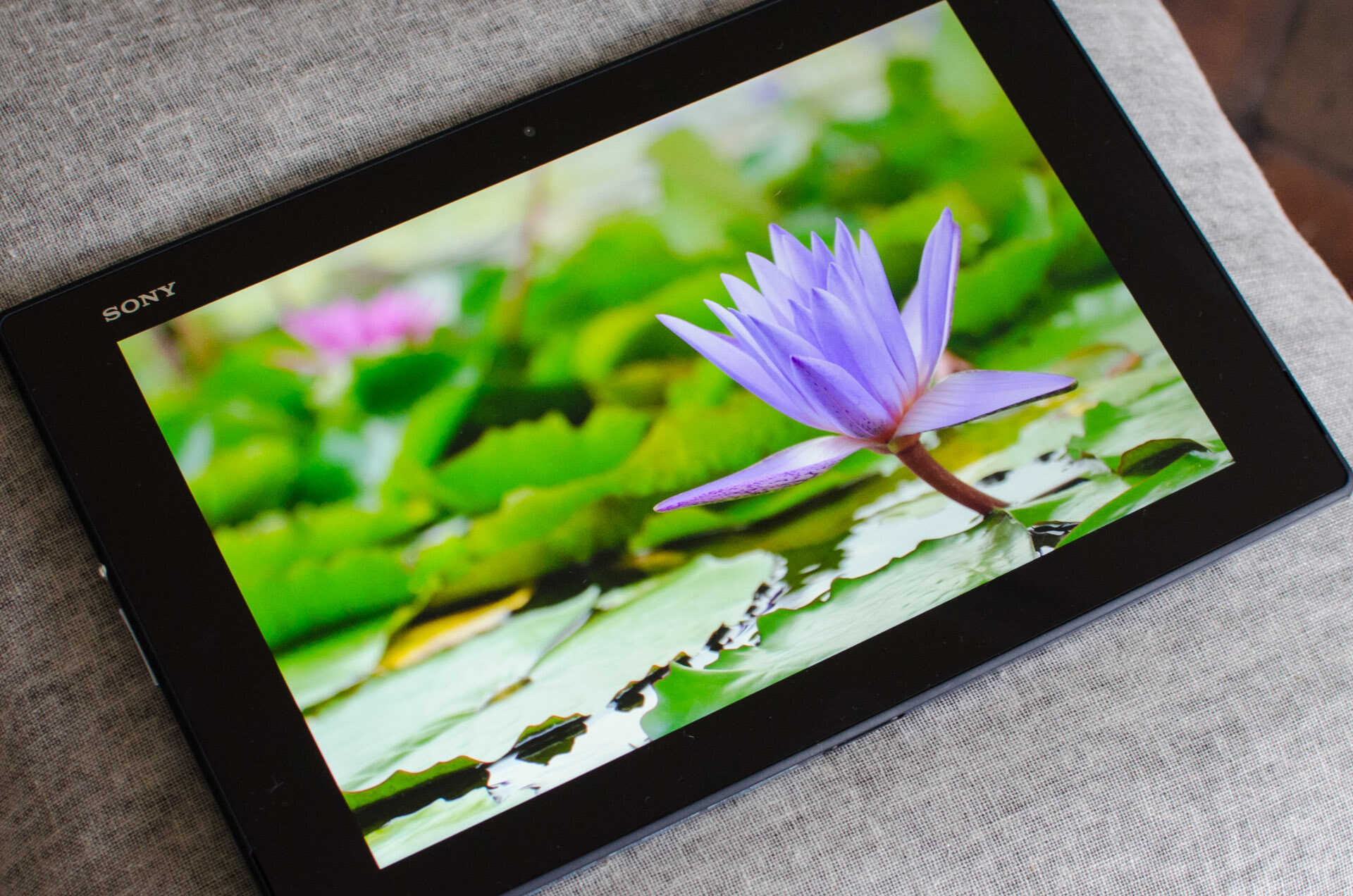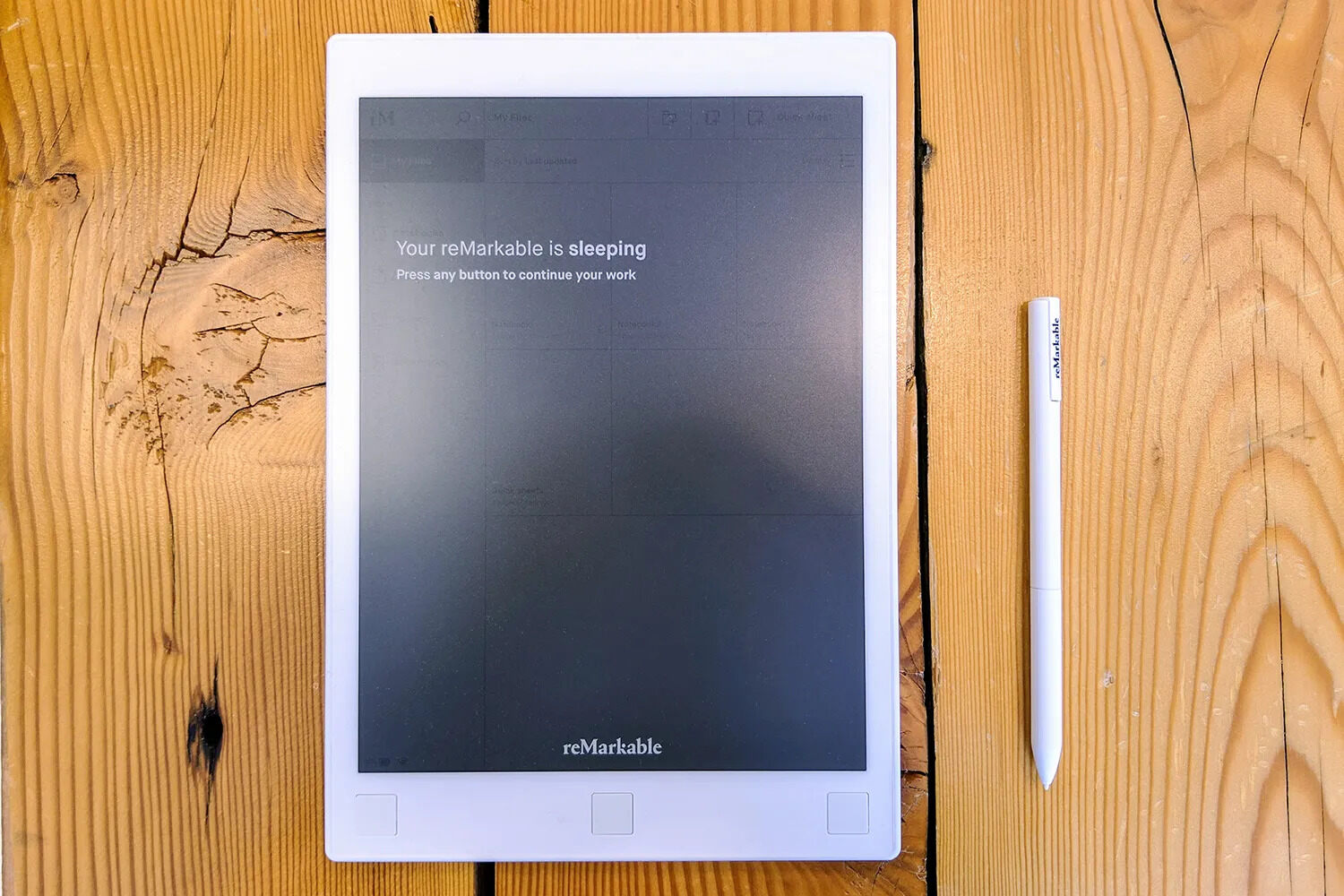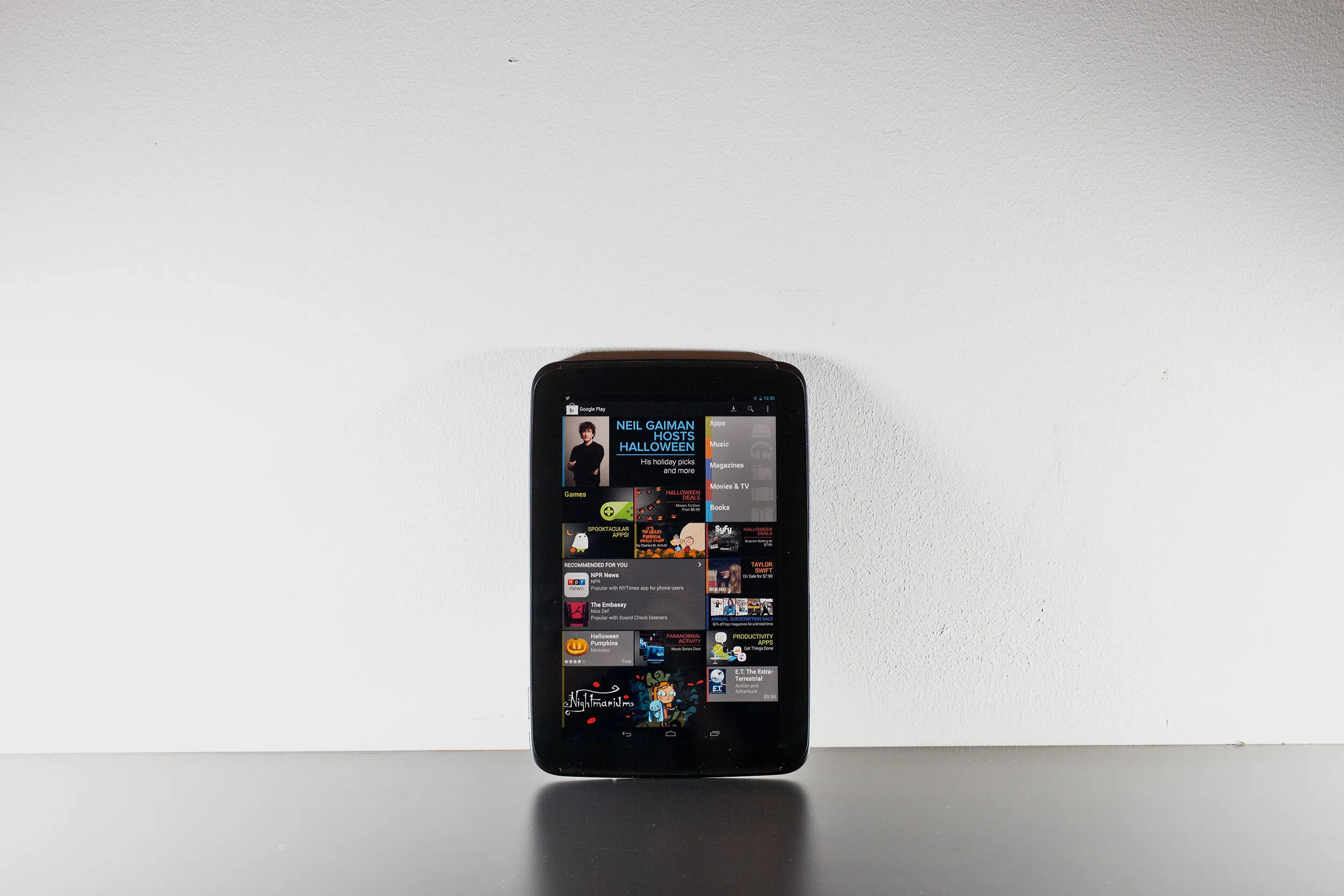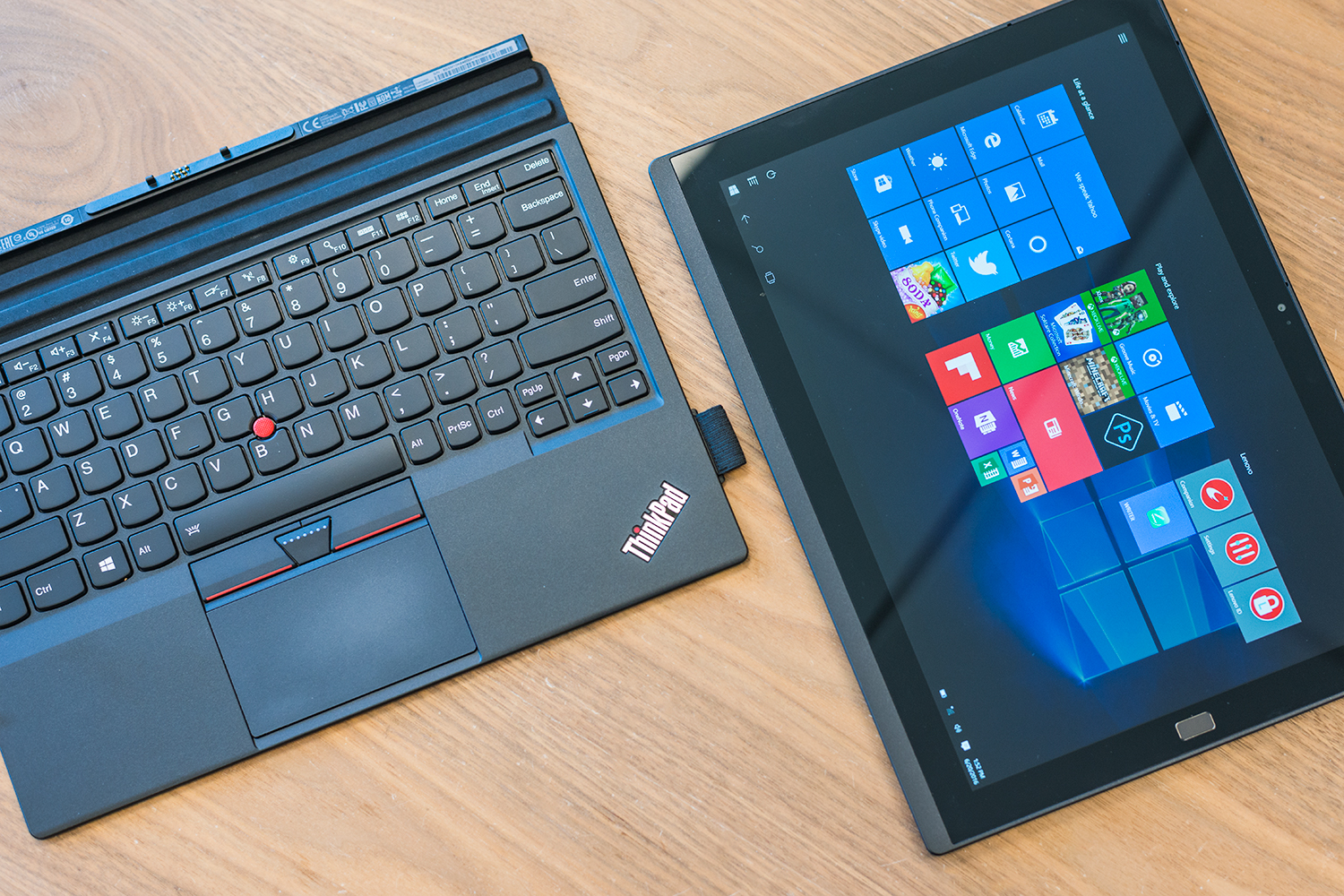Introduction
Welcome to the world of tablets! With their sleek design, portability, and powerful capabilities, tablets have become an essential device for both work and play. Whether you’re a professional looking for a portable workstation or a student in need of a versatile study tool, choosing the right tablet can make all the difference in your digital experience.
But with so many options on the market, how do you navigate your way through the sea of tablets to find the perfect fit for your needs? That’s where this guide comes in. In this article, we’ll walk you through the key factors to consider before buying a tablet, the different operating systems available, the types of tablets, and the various features and specifications to look out for.
When it comes to buying a tablet, it’s important to think about your specific requirements. Are you primarily going to use it for productivity tasks like email, document editing, and multitasking? Or are you more interested in entertainment purposes such as streaming movies, playing games, and browsing the web? Understanding your needs will help you make an informed decision and find a tablet that aligns with your lifestyle.
Not only are tablets great for on-the-go use, but they also offer a fantastic multimedia experience. The larger screen size compared to smartphones makes it ideal for watching movies, reading e-books, and browsing photos. Additionally, tablets offer access to a wide range of apps and games, making them a perfect companion for both work and play.
As you continue reading this guide, we’ll delve into the various factors to consider before making your purchase, including the different operating systems available, the types of tablets in the market, as well as the important features like size and display, battery life, performance, storage, and connectivity options. By the end of this article, you’ll be equipped with the knowledge needed to confidently select the best tablet for your unique needs.
Things to Consider Before Buying a Tablet
Before diving into the world of tablet shopping, it’s important to consider a few key factors to ensure you make the right choice. Here are some important things to keep in mind:
- Intended Use: Think about how you plan to use your tablet. Are you primarily going to use it for work, entertainment, or a combination of both? This will help determine the specifications and features you need.
- Budget: Set a budget for your tablet purchase. Tablets come in a wide price range, so having a budget will help narrow down your options and prevent overspending.
- Operating System: Consider the operating system that best fits your needs. The three most popular options are Android, iOS (iPad), and Windows. Each has its own set of features and app ecosystems.
- Screen Size: Decide on the screen size that suits your preferences. Tablets come in various sizes, ranging from compact 7-inch models to larger 12-inch tablets. A larger screen offers a better viewing experience for multimedia, while a smaller one enhances portability.
- Display Quality: Pay attention to the display resolution and technology. A higher resolution will result in sharper and more vibrant visuals, while technologies like IPS or AMOLED offer better color accuracy and wider viewing angles.
- Performance: Consider the processor, RAM, and storage capacity of the tablet. A faster processor and ample RAM ensure smooth multitasking, while sufficient storage space is important for storing apps, files, and media.
- Battery Life: Look for a tablet with good battery life, especially if you plan to use it on the go. Longer battery life means less frequent charging and more uninterrupted usage.
- Camera and Audio: If you enjoy photography or video chats, consider the quality of the tablet’s camera. Additionally, check for dual speakers or technologies like Dolby Atmos for a better audio experience.
- Connectivity: Determine the connectivity options you need. Most tablets offer Wi-Fi connectivity, while some models also have cellular capabilities for internet access on the go.
By considering these factors, you can narrow down your options and find a tablet that best suits your needs and preferences. Remember, it’s important to strike the right balance between performance, features, and your budget to ensure a satisfying and tailored tablet experience.
Operating System Options
When it comes to choosing a tablet, one of the first decisions you’ll need to make is selecting the operating system that best fits your needs. The operating system determines the user interface, app availability, and overall functionality of the tablet. Here are the three main operating system options to consider:
- Android: Android is developed by Google and is the most popular operating system for tablets. Known for its versatility, Android offers a wide range of customizable options and a vast selection of apps through the Google Play Store. It’s compatible with various hardware manufacturers, giving you a wider choice of tablets at different price points. Android also integrates well with other Google services, making it ideal for users already immersed in the Google ecosystem.
- iOS (iPadOS): iOS is the operating system used exclusively for Apple’s iPad tablets. Known for its user-friendly interface and seamless integration with other Apple devices, iOS offers a smooth and consistent user experience. It boasts a curated selection of high-quality apps in the App Store, optimized specifically for iPad tablets. iOS also receives frequent updates, ensuring security and performance improvements. However, it’s worth noting that iOS has a closed ecosystem, limiting customization options compared to Android.
- Windows: Windows tablets offer a similar user experience to traditional desktop computers, thanks to the familiar Windows interface. This operating system offers the benefit of running the full suite of Windows applications, making it an excellent choice for productivity and work-related tasks. Windows tablets also provide seamless integration with Microsoft services and offer features like touch and stylus input support. However, the selection of tablet-specific apps compared to Android and iOS may be more limited.
Each operating system has its own strengths and weaknesses, so the choice ultimately depends on your preferences and specific needs. Android offers customization options and wide-ranging hardware choices, while iOS provides a seamless user experience and a curated app ecosystem. Windows tablets are optimal for productivity tasks and compatibility with Windows software. Consider your priorities, such as app availability, interface preferences, and ecosystem compatibility, before making your final decision.
Remember to also consider the version of the operating system. Newer versions often bring improved performance, enhanced security, and additional features. Regular updates are crucial for maintaining the latest software patches and security fixes. With an up-to-date operating system, you’ll have access to the latest features and compatibility with newer apps.
Once you’ve determined your preferred operating system, you can narrow down your options further and choose a tablet that meets your requirements and offers the software experience you desire.
Different Types of Tablets
Tablets come in various forms and designs, catering to different user needs and preferences. Understanding the different types of tablets available can help you find the best fit for your intended use. Here are the main types of tablets to consider:
- Standard Tablets: Standard tablets are the most common type, featuring a touchscreen display and a standalone device design. They offer a balance between portability and functionality and are suitable for a wide range of tasks, including web browsing, media consumption, and productivity. Standard tablets are available in different sizes, ranging from compact 7-inch models to larger 12-inch variants, allowing you to choose based on your preference for mobility or screen real estate.
- 2-in-1 Tablets (Convertible Tablets): 2-in-1 tablets, also known as convertible tablets or hybrids, provide the flexibility of both a tablet and a laptop. They feature detachable or foldable keyboards, allowing you to switch between tablet mode for touch-based activities and laptop mode for typing and productivity tasks. This type of tablet is ideal for users who require the versatility of a laptop while still enjoying the convenience and portability of a tablet.
- Mini Tablets: Mini tablets are compact-sized tablets with screen sizes typically ranging from 7 to 8 inches. They offer a highly portable form factor, making them ideal for users who prioritize mobility and one-handed use. Mini tablets are suitable for tasks like reading e-books, browsing social media, and light multimedia consumption on the go.
- Gaming Tablets: Gaming tablets are designed specifically for gaming enthusiasts. They feature powerful processors, high-resolution displays, and dedicated graphics capabilities to deliver an immersive gaming experience. Gaming tablets often have enhanced cooling systems to handle demanding games and may offer additional gaming-centric features like physical gamepad attachments or optimized gaming software.
- E-Readers: E-readers, as the name suggests, are primarily used for reading e-books and digital publications. They offer e-ink displays that replicate the look of printed paper, resulting in a more comfortable reading experience, particularly in bright light conditions. E-readers typically have a longer battery life compared to other types of tablets and a lighter form factor, making them perfect for avid bookworms.
- Kids Tablets: Kids tablets are designed with younger users in mind, offering a child-friendly interface, parental control features, and age-appropriate content. They often come with rugged designs to withstand accidental drops and spills. Kids tablets are a great tool for educational purposes, fostering creativity, and providing entertainment for children.
Each type of tablet serves specific needs, so identifying your intended use and priorities will help you select the most suitable option. Consider factors such as portability, performance, display size, and any special features you may require. With a better understanding of the different types of tablets available, you can make an informed decision and find a tablet that aligns with your specific requirements.
Size and Display
The size and display of a tablet play a crucial role in determining your overall user experience. Choosing the right size and display features will depend on your needs, preferences, and the intended use of the tablet. Here are the key factors to consider:
Screen Size: Tablets come in various screen sizes, typically ranging from 7 to 12 inches. The size you choose will impact both portability and visual experience. Smaller tablets, such as those with 7 to 8-inch screens, are highly portable and ideal for one-handed use, making them great for reading, browsing, and on-the-go tasks. On the other hand, larger tablets, like those with 10 to 12-inch screens, offer more screen real estate, making them suitable for productivity tasks, multimedia consumption, and gaming.
Resolution: The resolution determines the level of detail and sharpness of the displayed content. A higher resolution, such as Full HD (1920×1080) or 4K UHD (3840×2160), means crisper images, clearer text, and better overall visual quality. If you primarily use your tablet for media consumption, gaming, or graphic-intense applications, opting for a tablet with a higher resolution display will enhance your viewing experience significantly.
Display Technology: Display technology also plays a role in the quality of the visual experience. Two popular display technologies used in tablets are IPS (In-Plane Switching) and AMOLED (Active-Matrix Organic Light-Emitting Diode). IPS displays offer excellent color reproduction, wide viewing angles, and accurate color representation, making them suitable for a range of tasks. AMOLED displays, on the other hand, produce vibrant colors and deep blacks, resulting in more vivid visuals, making them ideal for media consumption and enhancing contrast in images and videos.
Aspect Ratio: The aspect ratio of a tablet’s display impacts the overall viewing experience. The two most common aspect ratios are 4:3 and 16:9. A tablet with a 4:3 aspect ratio, like the ones found in iPads, provides a more square-like display, which is well-suited for web browsing, reading, and productivity tasks. Tablets with a 16:9 aspect ratio, similar to widescreen TVs, are more suitable for watching videos and consuming media content.
Touch Sensitivity and Pen Support: Consider the touch sensitivity and pen support if you need precise input, such as drawing or note-taking. Some tablets offer stylus support, providing a more natural and accurate writing or drawing experience. If you frequently use a stylus or require precise input, look for a tablet with active pen support, which often comes with features like pressure sensitivity and palm rejection.
It’s essential to balance screen size, resolution, and display technology based on your intended use and personal preferences. Consider factors such as portability, media consumption, productivity tasks, and any specific requirements you may have. By selecting the right size and display features, you can ensure an enjoyable and visually satisfying tablet experience.
Performance and Storage
When choosing a tablet, considering its performance and storage capacity is crucial to ensure it can handle your needs and provide a seamless user experience. Here are the key factors to consider:
Processor: The processor, or CPU, is the brain of the tablet and determines its overall performance. A faster processor will handle tasks more efficiently, resulting in quicker loading times, smoother multitasking, and better gaming performance. Processors from brands like Qualcomm Snapdragon, Apple A-series, and Intel Core offer reliable performance across different operating systems.
RAM: Random Access Memory, or RAM, influences how smoothly your tablet can run multiple apps and handle multitasking. A higher RAM capacity allows for more apps to stay open in the background without affecting performance. If you frequently use resource-intensive apps or require seamless multitasking, opt for a tablet with at least 4GB or more of RAM.
Storage Capacity: Storage capacity determines how much content – such as apps, photos, videos, and files – you can store on your tablet. Tablets typically offer two types of storage: internal storage and expandable storage via microSD cards. Consider your storage needs and choose a tablet with sufficient capacity. For intensive media use or extensive app installations, look for tablets with larger internal storage or ones that offer expandable storage.
Performance Optimization: In addition to hardware specifications, the software optimization of the tablet plays a crucial role in performance. Manufacturers often implement software optimizations to enhance performance and ensure smooth user experience. It’s advisable to check reviews and user feedback to gauge how well a tablet performs in real-world usage scenarios.
Benchmark tests: Benchmark tests provide insight into a tablet’s performance by measuring its processing power, graphics capabilities, and overall performance. Benchmark scores can be a valuable comparison tool when narrowing down your options, helping you understand how a tablet performs in comparison to others in its price range.
Gaming and Graphics: If gaming is a priority, consider a tablet with dedicated graphics capabilities or a powerful GPU (Graphics Processing Unit). Tablets featuring high-end GPUs ensure smooth gaming performance and the ability to handle graphically demanding games. Look for tablets with GPUs from brands like NVIDIA or Qualcomm Adreno for optimal gaming experiences.
By considering the processor, RAM, storage capacity, and software optimizations, you can ensure your tablet meets your performance requirements. Think about your specific needs, such as multitasking, gaming, or media consumption, and choose a tablet that provides the necessary performance capabilities for a seamless user experience.
Battery Life
Battery life is a crucial consideration when buying a tablet, especially if you plan to use it on the go or in situations where charging may not be readily available. A longer battery life ensures uninterrupted usage and reduces the need for frequent charging. Here are some key factors to consider when evaluating the battery life of a tablet:
Battery Capacity: The battery capacity is measured in mAh (milliampere-hour) and indicates the total amount of charge the battery can hold. Generally, a higher battery capacity translates to a longer battery life. However, it’s essential to note that battery life can vary based on factors such as the tablet’s power consumption, display brightness, and connected peripherals.
Usage Patterns: The actual battery life you experience can vary depending on how you use the tablet. Tasks that consume more power, such as gaming, streaming high-definition videos, or using resource-intensive apps, will drain the battery more quickly. On the other hand, basic tasks like web browsing, reading, and light productivity will have less impact on battery life.
Operating System Efficiency: Different operating systems have varying levels of power efficiency. Some operating systems, such as Apple’s iOS and Google’s Android, are known for their optimized power management features, resulting in better overall battery life. It’s worth considering the operating system’s efficiency and any power-saving features it offers when choosing a tablet.
Display and Brightness Settings: The display is one of the main power-consuming components of a tablet. Higher screen brightness levels and the use of vibrant wallpapers or live wallpapers can increase power consumption. Adjusting the brightness level to a comfortable setting and opting for a static wallpaper can help conserve battery life. Additionally, turning on features like automatic brightness adjustment or enabling power-saving modes can further enhance battery efficiency.
Connectivity and Background Apps: Features like Wi-Fi, cellular data, and Bluetooth can contribute to battery drain if left on continuously. Turning off unnecessary wireless connections when not in use can help conserve battery life. Additionally, minimizing the number of background apps running and disabling push notifications for non-essential apps can reduce battery usage.
Usage Habits: Your personal usage habits also play a role in the battery life you experience. Charging habits, such as avoiding overcharging or deep discharging the battery, can help maintain its longevity. Additionally, keeping the tablet in standby or sleep mode when not in use, rather than leaving it fully powered on, will further conserve battery life.
It’s important to note that advertised battery life figures may not always reflect real-world usage, as they are often determined under ideal conditions. To get a more accurate idea of battery life, it’s helpful to refer to user reviews, seek feedback from existing owners, and consult reputable technology publications.
By considering the factors mentioned above and aligning them with your usage patterns and needs, you can choose a tablet that offers a battery life that suits your requirements, allowing you to use your tablet for extended periods without needing frequent recharging.
Camera and Audio
The camera and audio capabilities of a tablet play an important role in enhancing your multimedia experience. Whether you enjoy capturing moments through photos and videos or prefer immersive audio during media consumption, considering these aspects is vital. Here’s what you should know about the camera and audio features of tablets:
Camera Quality: The camera quality varies across different tablet models. If you’ll be using your tablet for photography or video recording, it’s worth considering higher-resolution cameras with features like autofocus, image stabilization, and low-light capabilities. Tablets with rear-facing and front-facing cameras allow for versatile usage, facilitating tasks such as video calls, selfies, and document scanning.
Camera Specifications: Pay attention to camera specifications, including megapixel count, aperture size, and additional features like HDR (High Dynamic Range) and panorama mode. Higher megapixel counts generally result in sharper and more detailed images, while a wider aperture allows better low-light performance. Additional camera features can enhance your creativity and provide more flexibility when capturing images.
Video Recording: If you plan to record videos with your tablet, consider the resolution and frame rate supported by the camera. Higher resolution options, such as 4K Ultra HD or Full HD, offer better visual quality, while higher frame rates contribute to smoother videos.
Audio Quality: The audio quality of a tablet can greatly impact your media consumption experience. Features like stereo speakers, Dolby Atmos, or other audio enhancements contribute to richer and more immersive sound. Tablets with dual front-facing speakers often provide better audio quality compared to those with speakers located at the back or sides.
Audio Jack and Bluetooth: If you prefer using headphones or external speakers, ensure that the tablet has a standard audio jack or supports Bluetooth connectivity. Having these options allows for greater flexibility in using different audio accessories.
Microphones: Tablets with multiple built-in microphones can offer better audio input quality during calls or voice recordings. Some tablets also feature noise-cancellation capabilities, helping to reduce background noise for clearer audio in recordings or video calls.
Audio and Video Formats: Consider the compatibility of the tablet with various audio and video formats. Ensure that the tablet can handle the audio and video codecs you commonly use, allowing for seamless playback of your media files.
While tablets may not match the camera quality or audio capabilities of dedicated cameras or high-end audio devices, they still offer convenience and functionality for everyday use. If camera and audio capabilities are essential to you, consider reading reviews, checking sample images or videos, and comparing specifications to find a tablet that meets your expectations.
Connectivity Options
When choosing a tablet, considering its connectivity options is important to ensure seamless integration with other devices and easy access to the internet. Here are the key connectivity options to consider:
Wi-Fi: Wi-Fi connectivity allows your tablet to connect to wireless networks, giving you access to the internet at home, in cafes, or other public places with Wi-Fi access. Most tablets support Wi-Fi connectivity as a standard feature. It’s important to ensure that the tablet supports the Wi-Fi standards you commonly use, such as Wi-Fi 5 (802.11ac) or the newer Wi-Fi 6 (802.11ax) for faster and more stable connections.
Cellular Data: Some tablets offer cellular connectivity, allowing you to access the internet using a SIM card and a mobile data plan. This feature is especially beneficial if you need internet access while on the go or in areas without Wi-Fi coverage. Tablets with cellular capabilities often support 4G LTE or 5G networks, providing fast and reliable data connections when wireless networks are not available.
Bluetooth: Bluetooth connectivity enables you to wirelessly connect your tablet to compatible devices, such as headphones, speakers, keyboards, and mice. This feature is particularly useful for audio streaming, data transfer, and using external peripherals for enhanced productivity.
USB Connectivity: USB connectivity allows you to connect your tablet to various devices, including computers, external storage, cameras, and printers. The type and version of USB ports available on the tablet may vary, with USB-C becoming more prevalent due to its versatility and faster data transfer speeds. USB ports can be used for charging the tablet, transferring data, or connecting peripherals using appropriate adapters or cables.
Expandable Storage: Some tablets offer the ability to expand storage via a microSD card slot. This allows you to increase the overall storage capacity of the tablet, providing more room for apps, files, and media. Consider whether expandable storage is important to you, especially if you anticipate needing additional storage space in the future.
GPS: If you require accurate location tracking or navigation features, look for a tablet with built-in GPS functionality. GPS allows you to use location-based services, such as maps, location tagging in photos, or tracking your fitness activities.
NFC: Near Field Communication (NFC) enables contactless communication between devices in close proximity. NFC can be used for tasks like sharing files, making mobile payments, or pairing with compatible devices quickly.
It’s important to assess your connectivity needs and prioritize the options that are essential to you. Assessing the availability of Wi-Fi networks in your typical usage scenarios, whether you require cellular data for on-the-go use, or if Bluetooth connectivity is critical for your audio or peripheral needs, will help you determine the necessary connectivity options for your tablet.
Price Range
Price is a significant consideration when buying a tablet, as it determines your budget and influences the features and specifications available to you. Tablets come in a wide range of price points, offering options for different budgets and needs. Here’s what to consider regarding price range:
Entry-Level Tablets: Entry-level tablets are often the most affordable option. These tablets typically offer basic features and specifications suitable for casual use, such as web browsing, email, social media, and light multimedia consumption. They may have smaller screens, lower-resolution displays, and less powerful processors compared to higher-end models. Entry-level tablets are a budget-friendly choice for users who have minimal demands and are looking for basic functionality.
Mid-Range Tablets: Mid-range tablets offer a balance between features and affordability. They generally provide better performance, higher-resolution displays, more storage capacity, and improved camera capabilities compared to entry-level tablets. Mid-range tablets are suitable for users who require a more versatile device for tasks like productivity, media consumption, and gaming. They offer better overall value for the price compared to entry-level models.
High-End Tablets: High-end tablets offer top-of-the-line features, cutting-edge specifications, and premium build quality. They often boast faster processors, high-resolution displays, ample storage, advanced camera systems, and premium audio capabilities. High-end tablets provide a superior user experience and are ideal for users who demand top performance, advanced features, and the latest technologies. However, they come at a higher price point, making them suitable for those with specific needs and a larger budget.
Considerations for Value: When evaluating the price of a tablet, it’s important to consider the overall value it provides. If a tablet offers a combination of features, performance, build quality, and brand reputation that aligns with your needs, it may be worth investing in a higher-priced model. On the other hand, if you have more modest requirements and can find a tablet that meets your needs at a lower price point, it could offer better value for your money.
Research and Comparison: Before making a purchase, it’s advisable to research and compare different tablets within your budget range. Read reviews, compare specifications, and consider the feedback of previous buyers. This will help you make an informed decision and select a tablet that offers the best combination of features, performance, and price within your budget.
Remember that while price is an important consideration, it shouldn’t be the sole determining factor. Prioritize your needs, consider the features that are essential to you, and strike a balance between your budget and the functionality you require from a tablet.
Popular Tablet Brands
When it comes to buying a tablet, choosing a reputable and reliable brand can ensure a quality product and a good user experience. While there are many tablet brands available, some have established themselves as industry leaders. Here are some of the most popular tablet brands to consider:
Apple: Apple is known for its iPad lineup, which includes both standard tablets and the iPad Pro series. iPads are recognized for their sleek design, user-friendly interface, excellent build quality, and powerful performance. Apple’s iOS operating system offers a smooth and seamless experience, and the App Store provides a wide selection of high-quality apps optimized for iPads.
Samsung: Samsung is a major player in the tablet market, offering a diverse range of tablets under its Galaxy Tab series. Samsung tablets stand out with their vibrant displays, powerful processors, and the ability to expand storage via microSD cards. Many Samsung tablets feature the Android operating system, providing access to the Google Play Store and its extensive app library.
Amazon: Amazon’s Fire tablets are popular for their affordable price points and seamless integration with Amazon’s vast ecosystem. Fire tablets run Fire OS, a customized version of Android, and offer easy access to Amazon services like Kindle e-books, Prime Video, and Alexa voice assistant. These tablets are a great option for entertainment purposes and casual use.
Microsoft: Microsoft’s Surface tablets are known for their versatility and productivity capabilities. The Surface lineup offers a range of tablet options, including the premium Surface Pro and the more affordable Surface Go. Surface tablets run Windows operating system, which allows compatibility with desktop applications and includes features like touch and stylus input, making them suitable for productivity and creative tasks.
Lenovo: Lenovo is a renowned brand that offers a variety of tablets under its Tab series. Lenovo tablets are known for their solid performance, stylish design, and affordable options. They typically run on either Android or Windows operating systems, providing a familiar user experience and access to a wide range of apps.
Google: Google’s Pixel Slate and Pixel C tablets offer a premium Android tablet experience, showcasing the latest features, sleek design, and high-resolution displays. These tablets aim to provide a pure Android experience and access to the Google Play Store for apps and services.
Huawei: Huawei’s tablets, such as the MatePad and MediaPad series, often offer competitive specifications at reasonable prices. These tablets combine solid performance, attractive designs, and various screen sizes, making them suitable for a range of user preferences and needs. Huawei tablets typically run on Android, with their EMUI (Emotion user interface) providing additional customization and features.
These are just a few examples of the popular tablet brands available in the market. When selecting a tablet, consider the reputation of the brand, the customer support they offer, and the compatibility with your specific needs. Reading reviews and comparing specifications can help you identify the brand that aligns best with your requirements and preferences.
Best Places to Buy a Tablet
When it comes to purchasing a tablet, there are several reliable options for finding the tablet that meets your needs. Here are some of the best places to buy a tablet:
Online Retailers: Online retailers like Amazon, Best Buy, and Walmart offer a wide selection of tablets from various brands. These retailers provide detailed product descriptions, customer reviews, and the ability to compare prices and features. Online shopping allows you to conveniently browse through a vast inventory, take advantage of deals and discounts, and have the tablet delivered right to your doorstep.
Manufacturer’s Website: Visiting the manufacturer’s official website is another great option. Companies like Apple, Samsung, and Microsoft have dedicated websites where you can explore their tablet offerings, learn about the latest models, and make a purchase directly. Buying from the manufacturer’s website ensures authenticity and access to official warranties and customer support.
Electronics Retailers: Electronics retailers like Best Buy, Fry’s, or B&H Photo Video have physical stores where you can see and test tablets before making a purchase. These retailers often have knowledgeable staff who can provide guidance and answer questions, helping you make an informed decision. In-store purchases allow for immediate availability and the convenience of bringing the tablet home right away.
Mobile Carrier Stores: If you are considering a tablet with cellular connectivity, visiting a mobile carrier store like AT&T, Verizon, or T-Mobile can be beneficial. These stores offer a range of tablets compatible with their network, and their representatives can help you select the right device and data plan that fits your needs.
Refurbished or Pre-Owned: If you’re looking for more affordable options, consider purchasing a refurbished or pre-owned tablet. Websites like Swappa and Gazelle specialize in offering pre-owned devices that have been tested and verified to be in good working condition. Manufacturers also often sell certified refurbished tablets on their official websites, backed by warranties and quality assurance.
Physical Retail Stores: Many large retail chains, such as Walmart, Best Buy, and Target, have physical stores where you can find a variety of tablets. These stores offer the advantage of being able to see and touch the tablets before making a decision. Physical retail stores also provide the convenience of immediate purchase and the ability to speak with store representatives for advice and support.
When buying a tablet, consider factors such as price, availability, customer service, and return policies. It’s advisable to read reviews, compare prices, and research the reputation and reliability of the store before making a purchase. Ultimately, the best place to buy a tablet depends on your personal preference, the convenience you seek, and the level of customer support you require.
Conclusion
Choosing the right tablet can enhance your digital experience, whether it’s for work, entertainment, or a combination of both. By considering the factors discussed in this guide, such as the operating system, size and display, performance and storage, battery life, camera and audio capabilities, connectivity options, price range, and popular tablet brands, you can make an informed decision that aligns with your needs and preferences.
Researching and comparing tablets, reading reviews, and seeking advice from trusted sources will help you identify the tablet that best suits your requirements. Whether you opt for an Apple iPad, a Samsung Galaxy Tab, or another reputable brand, make sure to consider factors like performance, build quality, compatibility with your intended use, and long-term support.
Additionally, don’t forget to set a budget that reflects your needs and prioritize the features that are most important to you. By striking a balance between price and functionality, you can find a tablet that offers the best value for your investment.
Remember that technology evolves rapidly, and it’s essential to stay informed about the latest advancements and product releases. Keeping up with the latest software updates and security patches is also crucial to ensure the best performance and user experience from your tablet.
Whether you’re a student, professional, or casual user, choosing the right tablet can enhance your productivity, entertainment, and connectivity. By evaluating your needs, researching various options, and considering the factors outlined in this guide, you’ll be well-equipped to make an informed decision and find the perfect tablet to meet your specific requirements.









